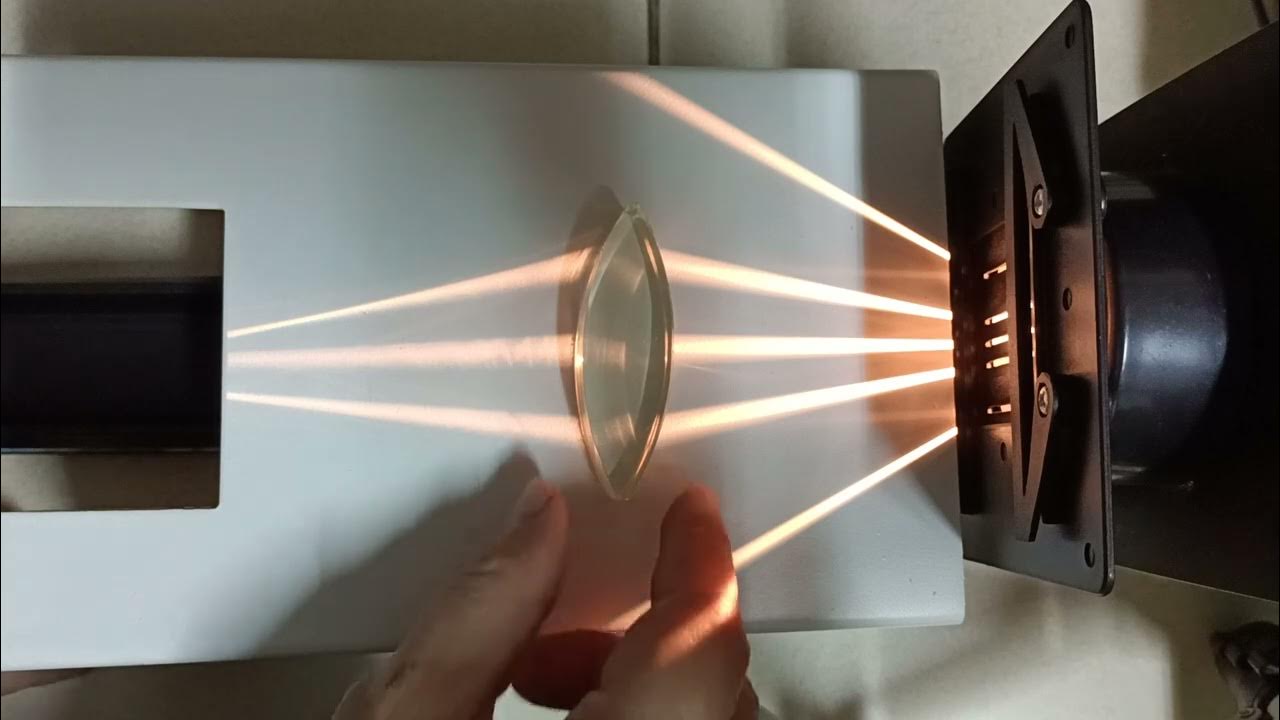Mirrors and Lenses Grade 10 Science Module 4 (part 1)
Summary
TLDRIn this educational video lesson, the instructor introduces the properties of light, focusing on mirrors and lenses. It explores the concepts of reflection, distinguishing between regular and irregular reflection, and outlines the two laws of reflection. The lesson explains how plane mirrors create laterally inverted, virtual images of objects, emphasizing their characteristics such as size and distance. Additionally, the video highlights the significance of mirrors in everyday life, from personal grooming to their essential role in medical practices. The session concludes with a preview of the next topic: curved mirrors.
Takeaways
- 😀 The lesson focuses on the electromagnetic spectrum, specifically on visible light and its properties.
- 🔍 Reflection occurs when light bounces off surfaces, and can be categorized into regular and irregular reflection.
- 🪞 Regular reflection happens on smooth surfaces like mirrors, where the angle of incidence equals the angle of reflection.
- 🌳 Irregular reflection occurs on rough surfaces, illuminating shaded areas and scattering light in various directions.
- 📏 The two laws of reflection are that the angle of incidence equals the angle of reflection, and the angle between the normal line and the reflected ray is the angle of reflection.
- 📸 Plane mirrors create virtual images that are laterally inverted, maintaining the same size and distance as the object.
- 👀 Lateral inversion causes left and right to switch in the mirror image, which can be seen in the reverse writing on ambulances.
- 🏠 Mirrors are essential in everyday life, found in homes, vehicles, and technology, reflecting our image and aiding in daily activities.
- 🩺 In healthcare, mirrors are used by dentists and surgeons for enhanced visibility during procedures.
- 📺 The significance of mirrors extends to modern technology, where they are integrated into various devices for functionality.
Q & A
What is the main focus of today's science lesson?
-Today's lesson focuses on light, specifically mirrors and lenses, and the characteristics of images formed by them.
What is reflection in the context of light?
-Reflection is the bouncing of light rays when they hit a surface, such as a plane mirror.
What are the two types of reflection discussed in the lesson?
-The two types of reflection are regular (specular) reflection, which occurs on smooth surfaces, and irregular (diffused) reflection, which occurs on rough surfaces.
What are the first and second laws of reflection?
-The first law states that the angle of incidence is equal to the angle of reflection. The second law states that the angle between the normal line and the reflected ray is the angle of reflection.
How is a normal line defined in the context of reflection?
-A normal line is an imaginary line drawn perpendicular to the surface of the mirror, serving as a reference for measuring angles of incidence and reflection.
What characteristics define images formed by plane mirrors?
-Images formed by plane mirrors are virtual, laterally inverted, located at the same distance from the mirror as the object, and have the same size as the object.
What is lateral inversion, and how does it relate to mirrors?
-Lateral inversion is the phenomenon where what is on the left side of an object appears on the right side of its mirror image, caused by the direction of light rays when they strike a mirror.
Can you give an example of lateral inversion from everyday life?
-An example of lateral inversion is the word 'ambulance' written in reverse on the front of an ambulance, allowing drivers in front to read it correctly in their mirrors.
What is the significance of mirrors in our daily lives, according to the lesson?
-Mirrors are essential in our daily lives as they help us reflect on our appearance, are used in various technologies, and play important roles in medical facilities.
What will the next session cover after the discussion on plane mirrors?
-The next session will focus on curved mirrors and their characteristics.
Outlines

This section is available to paid users only. Please upgrade to access this part.
Upgrade NowMindmap

This section is available to paid users only. Please upgrade to access this part.
Upgrade NowKeywords

This section is available to paid users only. Please upgrade to access this part.
Upgrade NowHighlights

This section is available to paid users only. Please upgrade to access this part.
Upgrade NowTranscripts

This section is available to paid users only. Please upgrade to access this part.
Upgrade NowBrowse More Related Video

CAHAYA DAN ALAT OPTIK (PART 3) : CERMIN CEMBUNG DAN LENSA CEKUNG IPA KELAS 8 SMP

Pemantulan dan Pembiasan Cahaya dengan KIT OPTIK

Rangkuman Materi IPA Kelas 8 Bab 11: Cahaya dan Alat Optik

Bab Cahaya dan Alat Optik - Part 1. Materi Sifat Cahaya dan Cermin Datar | Kelas 8 SMP/ MTs | K13

LIGHT: REFLECTION AND REFLACTION 💡 Science for Kids ⚡ Part 2 🌈

Pembiasan Cahaya Lensa Cembung dan Lensa Cekung
5.0 / 5 (0 votes)